-
 Bitcoin
Bitcoin $81,673.2634
8.27% -
 Ethereum
Ethereum $1,612.3637
13.83% -
 Tether USDt
Tether USDt $0.9993
0.00% -
 XRP
XRP $1.9880
13.70% -
 BNB
BNB $574.9372
5.64% -
 USDC
USDC $0.9997
-0.05% -
 Solana
Solana $115.3990
12.03% -
 Dogecoin
Dogecoin $0.1544
11.00% -
 TRON
TRON $0.2374
4.29% -
 Cardano
Cardano $0.6100
10.67% -
 UNUS SED LEO
UNUS SED LEO $9.3850
2.63% -
 Chainlink
Chainlink $12.2345
14.64% -
 Toncoin
Toncoin $3.0310
2.34% -
 Avalanche
Avalanche $17.9170
11.78% -
 Stellar
Stellar $0.2338
7.82% -
 Sui
Sui $2.1485
13.82% -
 Hedera
Hedera $0.1649
14.59% -
 Shiba Inu
Shiba Inu $0.0...01168
11.27% -
 MANTRA
MANTRA $6.7403
8.00% -
 Bitcoin Cash
Bitcoin Cash $295.7484
10.91% -
 Litecoin
Litecoin $74.1675
8.10% -
 Polkadot
Polkadot $3.5261
5.27% -
 Dai
Dai $1.0000
-0.02% -
 Bitget Token
Bitget Token $4.2700
4.04% -
 Ethena USDe
Ethena USDe $0.9989
0.02% -
 Hyperliquid
Hyperliquid $13.4067
13.98% -
 Pi
Pi $0.5927
7.30% -
 Monero
Monero $201.9325
3.40% -
 Uniswap
Uniswap $5.2271
12.26% -
 OKB
OKB $52.6907
4.76%
How are the transaction fees of the MetaMask wallet calculated?
Gas fees in MetaMask are determined by gas price (in Gwei) and gas limit; users can adjust these to balance transaction speed and cost based on network conditions.
Apr 05, 2025 at 01:08 am
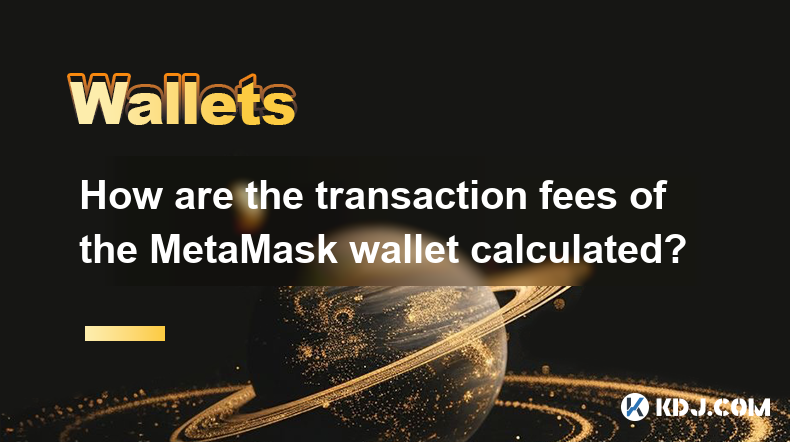
When using the MetaMask wallet to conduct transactions on the Ethereum blockchain, understanding how transaction fees are calculated is crucial for users. These fees, known as gas fees, are determined by two primary components: gas price and gas limit. The gas price is the amount of Ether (ETH) you're willing to pay per unit of gas, while the gas limit is the maximum amount of gas you're willing to use for the transaction. Together, these elements dictate the total cost of your transaction.
MetaMask automatically suggests a gas price based on current network conditions. However, users have the flexibility to adjust this price. If you set a higher gas price, your transaction is likely to be processed faster, as miners prioritize transactions with higher fees. Conversely, setting a lower gas price might result in longer wait times but can save you money. The gas limit, on the other hand, is set based on the complexity of the transaction. Simple transfers might require less gas, while more complex operations like smart contract interactions might need more.
Understanding Gas Price in MetaMask
The gas price in MetaMask is measured in Gwei, which is a smaller unit of ETH. One Gwei equals 0.000000001 ETH. When you initiate a transaction, MetaMask displays the current suggested gas price, which it calculates based on recent transaction data and network congestion. This suggested price aims to balance speed and cost effectively. Users can choose to accept this suggestion or manually adjust it.
If you decide to adjust the gas price, consider the trade-offs. A higher gas price can expedite your transaction but at a higher cost. For instance, if the suggested gas price is 20 Gwei and you set it to 50 Gwei, you're essentially paying more to have your transaction prioritized. On the other hand, setting it lower than the suggested price might lead to delays, as miners might not find it profitable to process your transaction quickly.
Setting the Gas Limit in MetaMask
The gas limit in MetaMask is set to ensure that your transaction has enough gas to be processed. If the gas limit is too low, the transaction might fail, and you could lose the gas used up to that point. MetaMask sets a default gas limit based on the type of transaction you're making. For simple ETH transfers, the default might be around 21,000 gas units. For more complex transactions, such as interacting with a smart contract, the gas limit might be higher.
You can adjust the gas limit in MetaMask, but it's important to understand the implications. Setting it too high might result in overpaying for gas that you don't use, while setting it too low could lead to transaction failure. MetaMask provides an estimate of the gas limit needed, but you can override this if you have a specific reason to do so. Always ensure that the gas limit you set is sufficient for the transaction to complete successfully.
Factors Influencing Transaction Fees
Several factors influence the transaction fees in MetaMask. The primary factor is the current demand on the Ethereum network. During periods of high network congestion, gas prices tend to rise as users compete to have their transactions processed quickly. Conversely, during times of low demand, gas prices can be significantly lower.
Another factor is the complexity of the transaction. Simple transfers of ETH typically require less gas than more complex operations like interacting with decentralized applications (dApps) or executing smart contracts. The more complex the transaction, the higher the gas limit and potentially the total fee.
The choice of network can also affect fees. While MetaMask primarily interacts with the Ethereum mainnet, it also supports other networks like Polygon, which can have different fee structures. Understanding the fee dynamics of different networks can help you optimize your transaction costs.
How to Optimize Transaction Fees in MetaMask
Optimizing transaction fees in MetaMask involves a balance between speed and cost. Here are some strategies to help you manage your fees effectively:
Monitor Network Conditions: Use tools like Etherscan or EthGasStation to check current gas prices and network congestion. Timing your transactions during periods of lower demand can help you save on fees.
Adjust Gas Price: If you're not in a hurry, consider setting a lower gas price than the suggested amount. This can reduce your costs but may result in longer wait times.
Use Gas Limit Wisely: Ensure the gas limit is set appropriately for your transaction. For simple transfers, the default setting is usually sufficient. For more complex transactions, you might need to increase the limit, but be cautious not to set it too high.
Consider Layer 2 Solutions: Networks like Polygon or Optimism can offer lower transaction fees compared to the Ethereum mainnet. If your transaction doesn't need to be on the mainnet, using a Layer 2 solution can be cost-effective.
Batch Transactions: If you need to perform multiple transactions, consider batching them into a single transaction where possible. This can reduce the overall gas costs.
Common Issues and Solutions with Transaction Fees
Users often encounter issues with transaction fees in MetaMask, such as unexpectedly high fees or transactions that fail due to insufficient gas. Here are some common problems and their solutions:
High Fees: If you're facing high fees, consider waiting for a period of lower network congestion or using a Layer 2 solution. Adjusting the gas price lower can also help, but be prepared for potential delays.
Transaction Failures: If a transaction fails due to an insufficient gas limit, you'll need to resubmit the transaction with a higher gas limit. Always ensure the gas limit is adequate for the transaction type.
Stuck Transactions: If your transaction is stuck due to a low gas price, you can attempt to speed it up by increasing the gas price through MetaMask's "Speed Up" feature. Alternatively, you can cancel the transaction and resubmit it with a higher gas price.
Gas Estimation Errors: Sometimes, MetaMask might provide an inaccurate gas estimate. If this happens, you can manually adjust the gas limit based on your understanding of the transaction complexity.
Frequently Asked Questions
Q: What is gas in the context of Ethereum transactions?
A: Gas is a unit of measure for the computational effort required to perform operations on the Ethereum network. It's used to calculate the transaction fee, which is the product of the gas price and the gas used.
Q: How does MetaMask calculate the suggested gas price?
A: MetaMask calculates the suggested gas price based on recent transaction data and current network congestion. It aims to provide a balance between speed and cost.
Q: Can I set my own gas price and limit in MetaMask?
A: Yes, MetaMask allows users to manually adjust both the gas price and the gas limit. This gives you control over the speed and cost of your transactions.
Q: What happens if I set the gas limit too low?
A: If the gas limit is set too low, your transaction might fail, and you could lose the gas used up to that point. It's important to set the gas limit high enough to cover the transaction's needs.
Q: How can I reduce transaction fees on MetaMask?
A: To reduce transaction fees, you can monitor network conditions, adjust the gas price lower, use the appropriate gas limit, consider Layer 2 solutions, and batch transactions when possible.
Disclaimer:info@kdj.com
The information provided is not trading advice. kdj.com does not assume any responsibility for any investments made based on the information provided in this article. Cryptocurrencies are highly volatile and it is highly recommended that you invest with caution after thorough research!
If you believe that the content used on this website infringes your copyright, please contact us immediately (info@kdj.com) and we will delete it promptly.
- Pi Network (PICOIN) price is down by 71% from its all-time high near $3, and crypto traders are now wondering whether this altcoin is still a good investment.
- 2025-04-10 11:25:14
- Bitcoin (BTC) Price Remains Above $87,000 as Market Awaits U.S. Data Releases
- 2025-04-10 11:25:14
- BlackRock Launches Bitcoin ETP (Tracking Bitcoin) in Europe
- 2025-04-10 11:20:15
- Immutable Games (IMX) Has Officially Dropped Its Investigations by the Securities and Exchange Commission (SEC)
- 2025-04-10 11:20:15
- BNB Price Eyes Key Upside Break
- 2025-04-10 11:20:13
- Top Beginner-Friendly Crypto Apps: Ka.app, Uphold, eToro
- 2025-04-10 11:20:13
Related knowledge
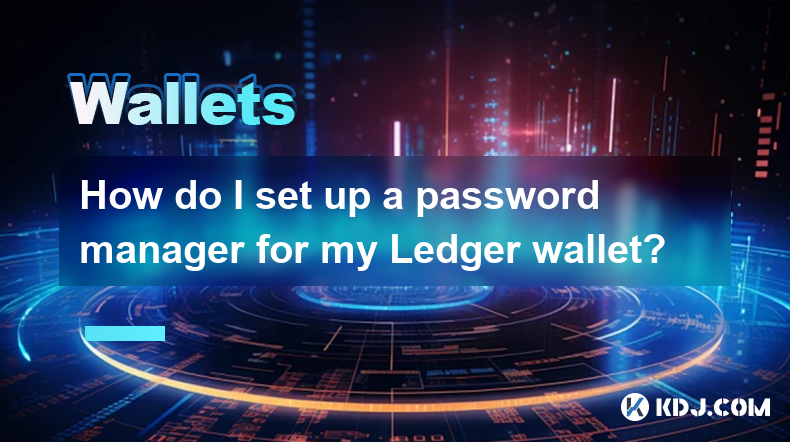
How do I set up a password manager for my Ledger wallet?
Apr 10,2025 at 11:50am
Setting up a password manager for your Ledger wallet is an essential step in enhancing the security of your cryptocurrency assets. A password manager helps you generate, retrieve, and keep track of complex passwords, ensuring that your Ledger wallet remains secure. In this article, we will guide you through the process of setting up a password manager s...
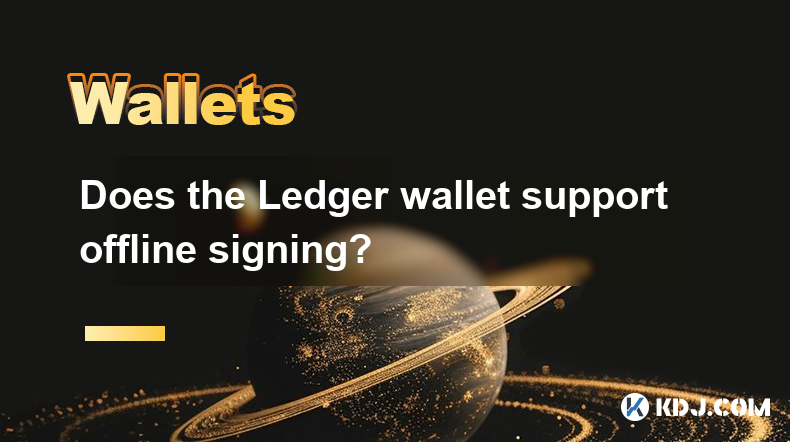
Does the Ledger wallet support offline signing?
Apr 09,2025 at 04:49am
Introduction to Ledger Wallet and Offline SigningThe Ledger wallet is a popular hardware wallet used by cryptocurrency enthusiasts to securely store their digital assets. One of the key features that users often inquire about is offline signing. Offline signing, also known as cold signing, is a security measure that allows users to sign transactions wit...
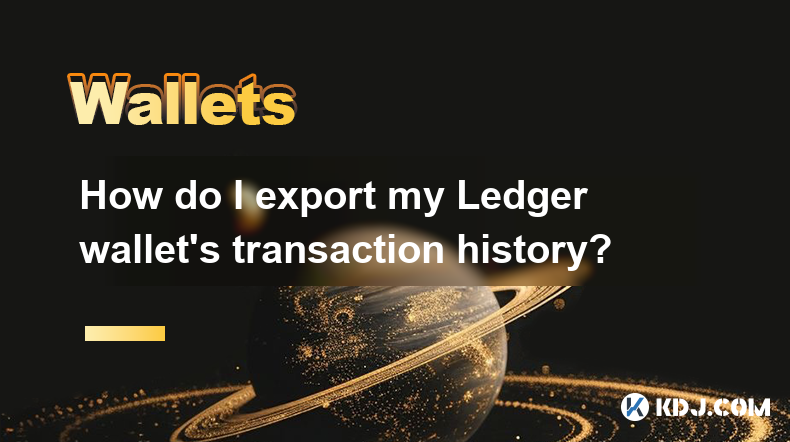
How do I export my Ledger wallet's transaction history?
Apr 10,2025 at 10:15am
Exporting your Ledger wallet's transaction history can be a crucial step for managing your cryptocurrency assets effectively. Whether you need this data for tax purposes, portfolio tracking, or simply for record-keeping, understanding how to access and export this information is essential. In this article, we will guide you through the process of export...
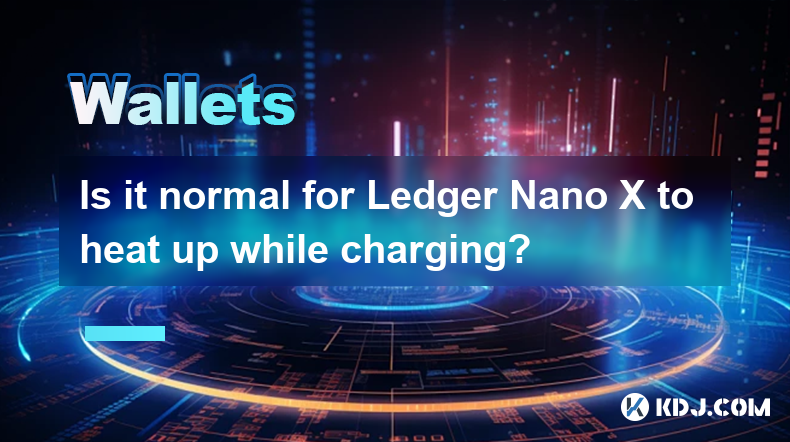
Is it normal for Ledger Nano X to heat up while charging?
Apr 09,2025 at 04:01pm
Is it normal for Ledger Nano X to heat up while charging? When using a hardware wallet like the Ledger Nano X, it's common for users to have concerns about the device's behavior, especially when it comes to heat generation during charging. This article will delve into the reasons behind the Ledger Nano X heating up while charging, whether it's normal, a...
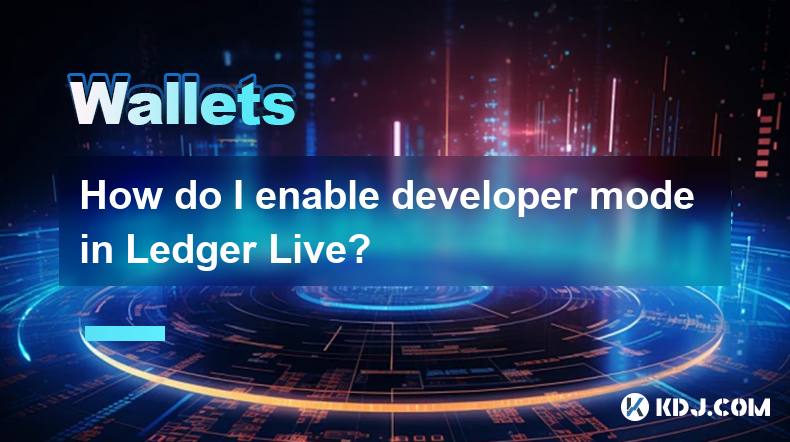
How do I enable developer mode in Ledger Live?
Apr 10,2025 at 05:49am
Enabling developer mode in Ledger Live can be a useful feature for advanced users who want to access experimental features or test new functionalities. This guide will walk you through the process of enabling developer mode in Ledger Live, ensuring you understand each step thoroughly. Understanding Developer ModeDeveloper mode in Ledger Live allows user...
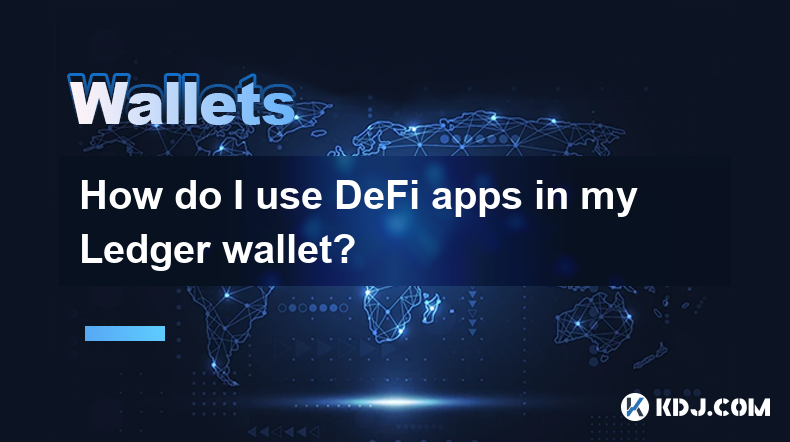
How do I use DeFi apps in my Ledger wallet?
Apr 10,2025 at 11:28am
Using DeFi apps with your Ledger wallet allows you to interact with decentralized finance platforms securely. This guide will walk you through the process of setting up and using DeFi apps with your Ledger device, ensuring your assets remain safe while you explore the world of DeFi. Setting Up Your Ledger Wallet for DeFiBefore you can use DeFi apps with...

How do I set up a password manager for my Ledger wallet?
Apr 10,2025 at 11:50am
Setting up a password manager for your Ledger wallet is an essential step in enhancing the security of your cryptocurrency assets. A password manager helps you generate, retrieve, and keep track of complex passwords, ensuring that your Ledger wallet remains secure. In this article, we will guide you through the process of setting up a password manager s...

Does the Ledger wallet support offline signing?
Apr 09,2025 at 04:49am
Introduction to Ledger Wallet and Offline SigningThe Ledger wallet is a popular hardware wallet used by cryptocurrency enthusiasts to securely store their digital assets. One of the key features that users often inquire about is offline signing. Offline signing, also known as cold signing, is a security measure that allows users to sign transactions wit...

How do I export my Ledger wallet's transaction history?
Apr 10,2025 at 10:15am
Exporting your Ledger wallet's transaction history can be a crucial step for managing your cryptocurrency assets effectively. Whether you need this data for tax purposes, portfolio tracking, or simply for record-keeping, understanding how to access and export this information is essential. In this article, we will guide you through the process of export...

Is it normal for Ledger Nano X to heat up while charging?
Apr 09,2025 at 04:01pm
Is it normal for Ledger Nano X to heat up while charging? When using a hardware wallet like the Ledger Nano X, it's common for users to have concerns about the device's behavior, especially when it comes to heat generation during charging. This article will delve into the reasons behind the Ledger Nano X heating up while charging, whether it's normal, a...

How do I enable developer mode in Ledger Live?
Apr 10,2025 at 05:49am
Enabling developer mode in Ledger Live can be a useful feature for advanced users who want to access experimental features or test new functionalities. This guide will walk you through the process of enabling developer mode in Ledger Live, ensuring you understand each step thoroughly. Understanding Developer ModeDeveloper mode in Ledger Live allows user...

How do I use DeFi apps in my Ledger wallet?
Apr 10,2025 at 11:28am
Using DeFi apps with your Ledger wallet allows you to interact with decentralized finance platforms securely. This guide will walk you through the process of setting up and using DeFi apps with your Ledger device, ensuring your assets remain safe while you explore the world of DeFi. Setting Up Your Ledger Wallet for DeFiBefore you can use DeFi apps with...
See all articles




















































































